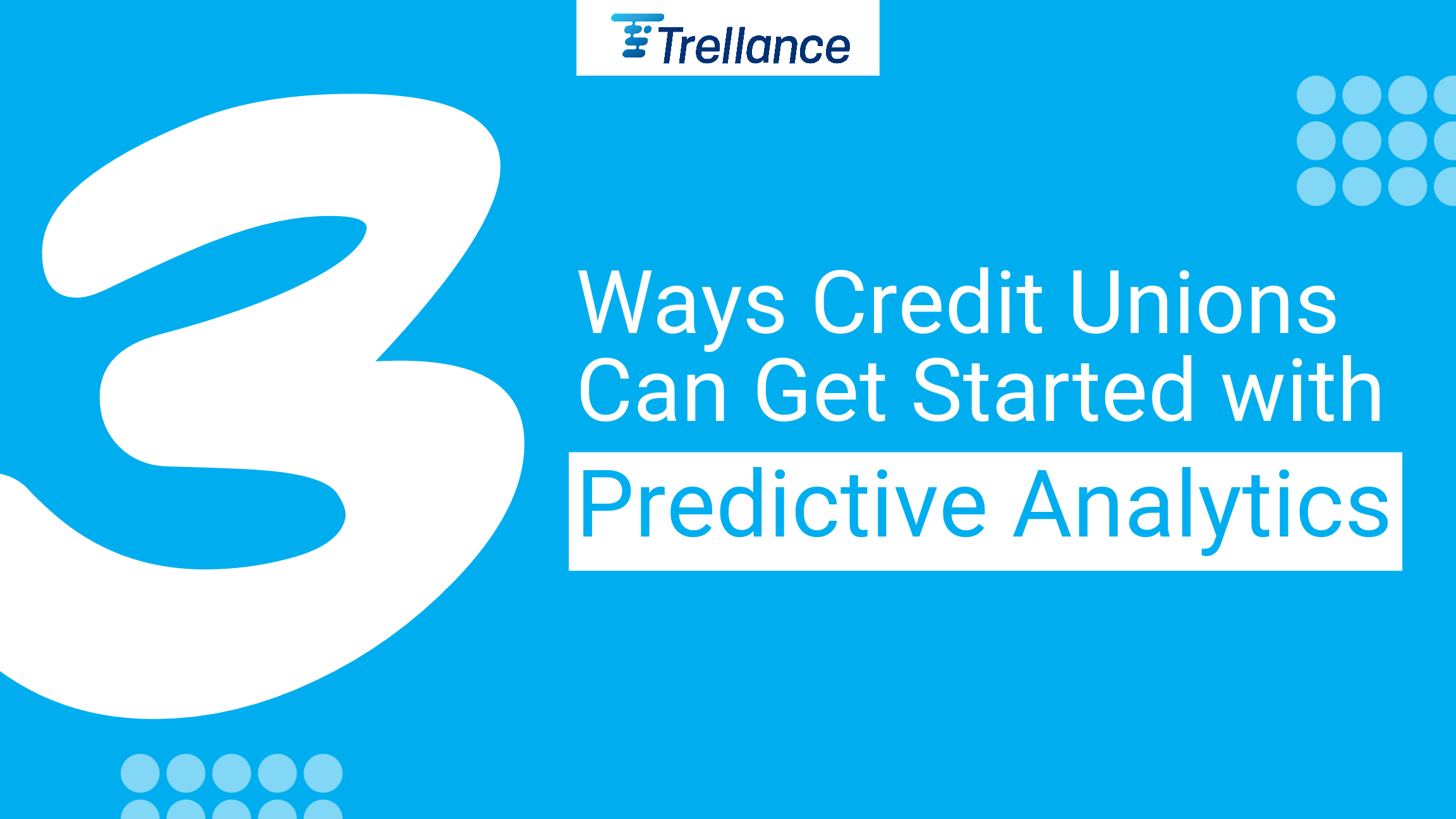Is it too lofty a goal to make member experience grow better with every single transaction? Not if predictive analytics is part of your plan.
Every member interaction – even the most routine – reveals incredibly valuable information. In the aggregate, these descriptive analytics, or historical behaviors, form a detailed picture of each member that deciphers their important needs, key patterns of behavior, and proclivities.
When this data is properly captured, organized, and analyzed, more powerful predictive analytics can be used to anticipate the next right moves to satisfy a member’s unique needs and preferences on an individual basis. Wouldn’t it be nice to have a roadmap like that?
Your Path to Predictive Analytics
In order for a credit union to begin using predictive analytics, it first must complete two important steps.
The first is to implement good data management practices. To make accurate predictions from data, a credit union must first properly capture, store, organize, structure, and validate its data.
After that, the next step in the progression is descriptive analytics. This form of analytics looks at historical member data to identify important patterns and trends. It lays the foundation to accurately predict what is most likely to come next.
Predictive analytics is the next stage in the hierarchy. It uses more advanced algorithms to synthesize a member’s past behaviors and develop probabilities around what is most likely to come next. Predictive analytics utilizes machine learning, which continuously and automatically improves an algorithm as it is fed more data. This makes your credit union more intelligent by the day! Every member transaction continuously improves how you understand and serve each member.
How Credit Unions Can Use Predictive Analytics
While there are many exciting ways to use predictive analytics, here are three ways credit unions can get started.
1. Member Personas
Data-driven member personas are far more robust and dynamic than traditional personas. They are built on real-world, real-time behaviors, which can be integrated with other sources of data to make them more accurate and insightful. Your membership can be broken into finely tuned persona segments, with data providing the roadmap for how to serve them best. Even more, this information enables your credit union to target and acquire more of your best members.
2. Next Best Offer
Highly personalized marketing – at scale – is driven by Next Best Offer (NBO) predictive models. Based on a members’ actual behaviors and habits, NBO predicts their likely needs and recommends the next two most beneficial products and services. When done right, you can reach your members with “mind-reading” compelling offers they may have already been contemplating. Response rates – and warm, fuzzy feelings – increase significantly.
3. Targeted Member Retention
Members don’t announce when they’re planning to leave your credit union. Attrition happens silently, but in retrospect, there are telling patterns of behavior. With predictive analytics, a credit union can move beyond forecasting to understanding exactly which member relationships are in danger. Targeted, proactive re-engagement campaigns can intervene before its too late, improving retention rates.
Most credit unions find moving into predictive analytics to be a transformative step. It’s easier than ever for members to shop for financial products, and their loyalty is never promised. But by delivering consistently relevant and meaningful experiences with every interaction, a credit union can more safely predict a high degree of success.
Article written by Trellance Chief Sales Officer Patrick McElhenie
Original Publish Date: June 20, 2022
Article Revision Date: December 5, 2023










